Octopath Traveler Review: A Solid Throwback To The JRPG Greats
- A big, meaty RPG you can sink your teeth into
- Combat system is varied, tactical, and deep
- Fantastic graphics and soundtrack
- Story is disjointed with no single direction
- Characters never really develop relationships
- Chapter structure gets a little old after a while
After more than a year of waiting, Octopath Traveler has finally arrived on the Nintendo Switch, and boy are JRPG fans excited. One look at its aesthetic is all you need to begin drawing comparisons to the many excellent JRPGs from the 1990s, like Secret of Mana, Final Fantasy VI, and Chrono Trigger. It's safe to say that hype among the folks who love this genre was incredibly high in the lead up to release, but now that it's here, does Octopath Traveler live up to the hype? Is it the 16-bit throwback we've all been waiting for?
Those are difficult questions to answer. In a lot of ways, Octopath Traveler does live up to the hype and is worthy of standing next to the JRPG greats. At the same time, though, Octopath Traveler isn't afraid to set aside some of the tropes of the genre, which is does to varying degrees of success. Generally speaking, I think most JRPG fans will find plenty to like in this game, but I wouldn't be surprised if the game causes some furrowed brows too.
As you can tell, I'm somewhat conflicted when it comes to Octopath Traveler, but that isn't some kind of universal truth that applies to every aspect of the game. There are some things about it that are unquestionably great, such as the graphics. Octopath Traveler is a beautiful game, and more than that, it's possibly one of the best looking games I've ever laid eyes on.
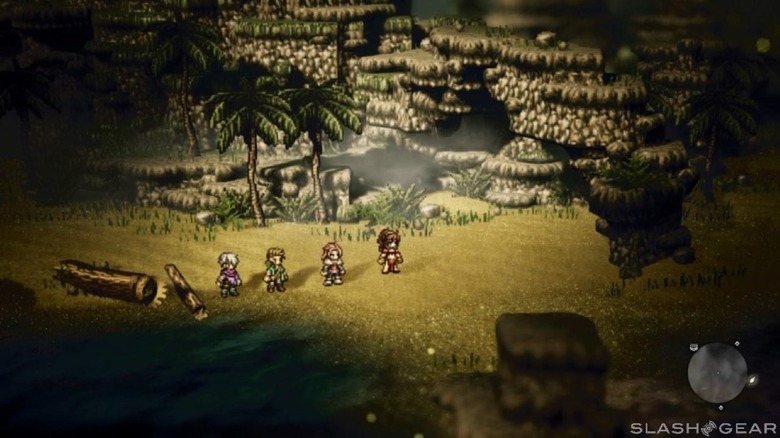
The screenshots the Switch captures definitely do not do the game justice. The sprites in this Octopath Traveler all look excellent – especially the oversized boss sprites – and the environments all have this effect that almost makes them seem like they're comprised of painted pixels. Square Enix, I believe, calls this an "HD-2D" graphics style, and that's honestly the best way to describe the visuals in Octopath Traveler. It's something that needs to be seen, controller in-hand, to be appreciated, as I don't really think screenshots or video are going to convey its unique aesthetic well.
What's more is that the game looks fantastic even when you're playing it in handheld mode, which can't be said for all Switch games out there. Regardless of the usage mode you play in most, Octopath Traveler is a feast for the eyes, and quite often during my time with the game, I found myself stopping just to admire my surroundings for a while.
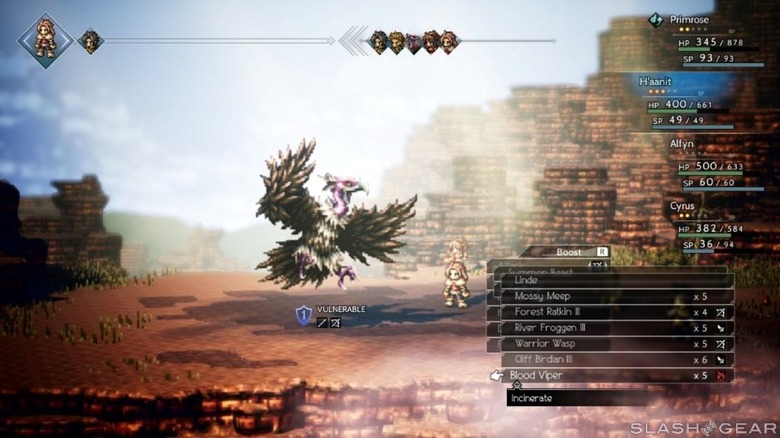
Similarly, the soundtrack in this game is incredible. The score was composed by Yasunori Nishiki, and I'm almost positive that this is the first time I've ever heard any of his music. I'm utterly impressed with what he's done for this game though, as this is one of those instances where the music is so good that it elevates the package as a whole. The music in this game ends up feeling like a crucial part of the experience instead of just a backdrop, and each song fits its respective scene perfectly. I hope I hear more from Nishiki in the future, because it's clear from Octopath Traveler that he has a ton of talent.
Combat is another high point in this game, and I'm not sure I've ever had more fun with combat in a JRPG. Maybe that just shows that my experience with the genre has been limited to the big names, but I suspect that even seasoned JRPG veterans who count the genre as their favorite will agree that Octopath Traveler's combat is something worth getting excited about.
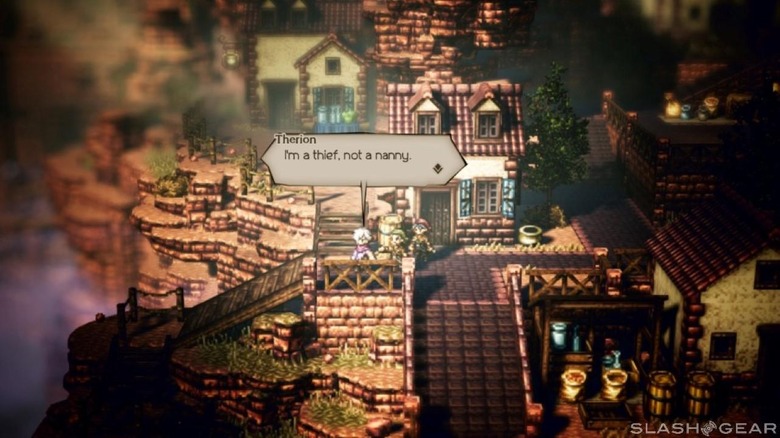
Combat in Octopath Traveler revolves around a simple concept: breaking through your opponent's defenses. Every enemy you encounter in Octopath Traveler has at least one weakness, but many enemies have multiple. Those weaknesses may be weapon types or elemental attacks, and it's your job to figure out what they are. Each enemy also has a certain number of shield points, which decrease each time you hit them with something they're weak to. While they still have at least one shield point, every attack you hit them with will do less damage than it normally would, so the full potential of your damage output won't be realized until you get those defenses down.
When you finally "break" an opponent's defenses, they'll be stunned for the remainder of the current turn and the entirely of the next one, wiping their attacks from the turn order and giving your team an opening to do as much damage as possible before their shield points are regenerated.
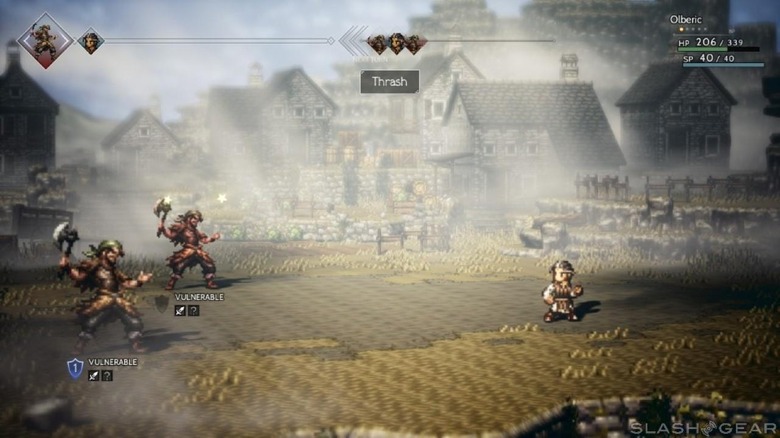
To dish out that damage, you can spend boost points to super-charge your attack. Each of your characters earns one boost point at the beginning of each turn, and boost points are capped at five per character. You can spend up three at a time on a single action, but the most interesting thing is that you're not limited to only spending your boost points on attacks. You can use them to make your healing more potent, extend the duration of positive status effects on your allies and negative status effects on your enemies, or increase the chances of certain actions (such as stealing or capturing beasts) succeeding.
Between boost points, enemy weaknesses, and defense breaks, you have a lot of tactical freedom in each battle you'll fight. A job system that seems fairly simple on the surface adds even more layers to combat, ensuring that it never really gets stale. Octopath Traveler's combat helps make boss battles feel suitably epic, and if you don't ensure that your team covers potential enemy weaknesses well, the battles you'll face will feel grueling at times. Combat is one of the most consistently exciting and addicting aspects of Octopath Traveler, and it is easily one of my favorite parts of the game.
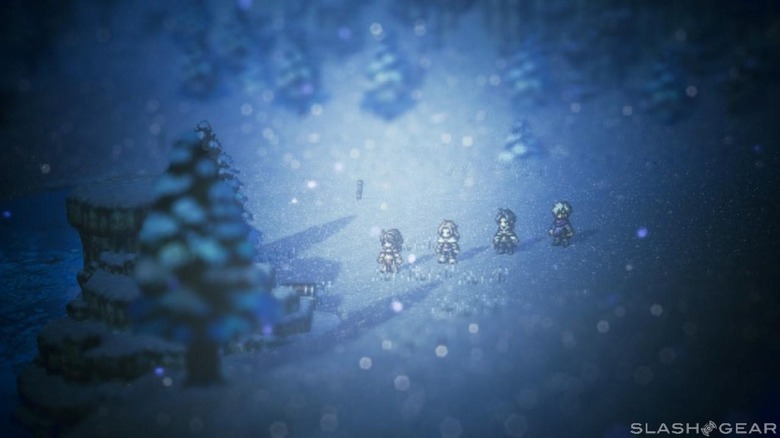
Now that we've covered the parts of Octopath Traveler that are unquestionably great, let's tackle something that's been a little more divisive: the story. Octopath Traveler, as I'm sure many of you have heard by now, doesn't have a conventional RPG story where our heroes unite to accomplish a common task. There are no great evils or existential forces pulling our eight heroes together, and for most of the game, their alliance feels like one of convenience more than anything else.
Rather than sticking to one overarching narrative, Octopath Traveler instead has eight distinct stories – one for each of its starring characters. For the vast majority of the game, these stories have almost no overlap. Each character is on their own quest and has their own motivation, and in fact, the game itself even treats these characters as if they are adventuring on their own most of the time.
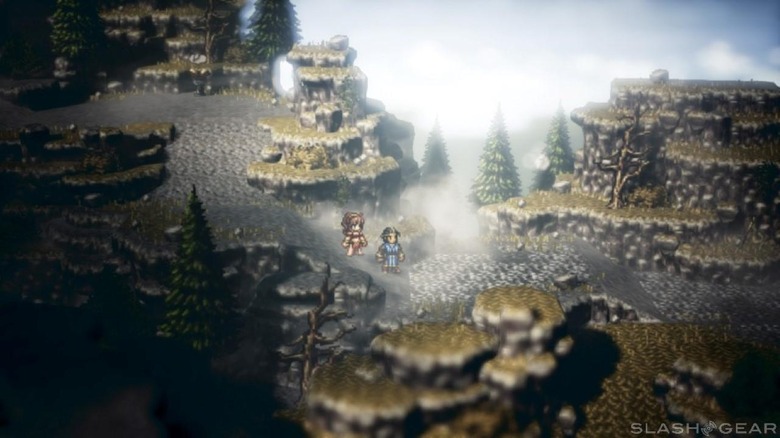
At first, this is very strange. Even after playing for more than 60 hours I still find this approach to be a little weird. It's a neat idea, for sure, but I feel that the execution could have been better, because there are points where the disjointed narrative just feels like a slog that isn't really going anywhere.
The stories themselves range from dark to more lighthearted, at least at the start. Primrose the dancer, for instance, is on a quest of vengeance. Her goal is to kill the three men who assassinated her father and usurped his throne when she was a child, and it's suggested very early on that she's lived a horrifying life while she waits for the right time to exact her revenge. Tressa, on the other hand, is an all around cheery girl who one day decides to leave her quiet seaside town and set out on a quest to see the world and hone her skills as a merchant.
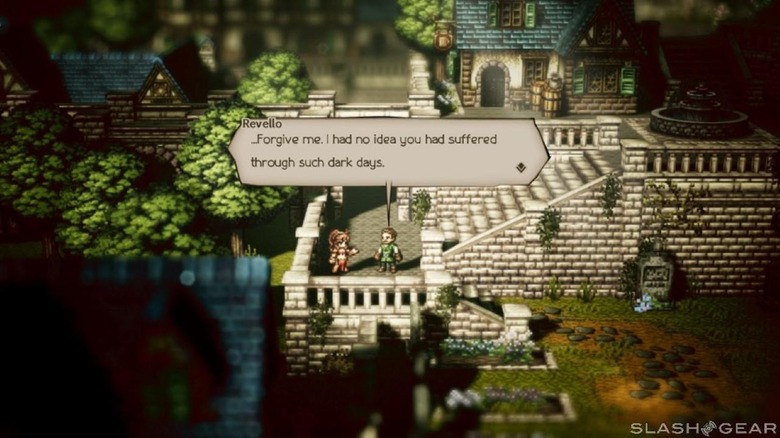
In general, the stories are all engaging to some degree, but inevitably, you end up becoming invested in some more than others. For me, at least, this resulted in something of a lopsided experience where I was immersed at some points and bored at others. I don't expect this will be the case for everyone, and indeed, I have a feeling that some will appreciate every story for what it offers.
That isn't to say that some characters are somehow more valuable than others. Even if you're like me and you find that some of these mini-narratives leave something to be desired, there's plenty of reason to recruit every character in the game and see what their story holds. Each character starts the game with one of eight different jobs, and those jobs grant a unique path action. You'll use these path actions to complete quests and interact with NPCs.
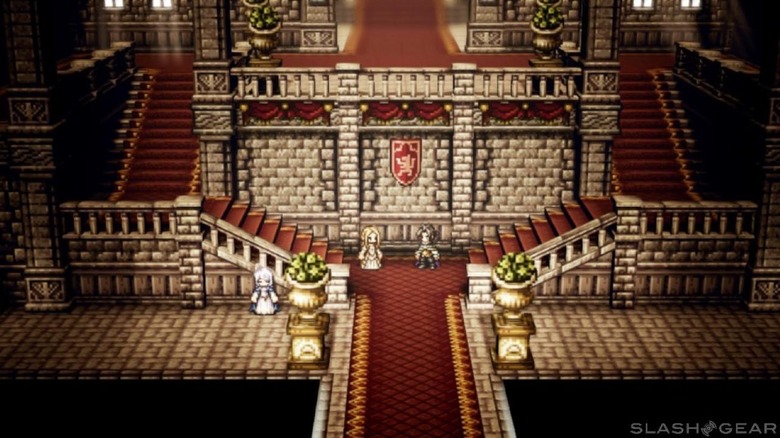
Therion can steal from NPCs you encounter, but if you'd rather walk a more moral path, Tressa can buy their items at a discount instead. Ophilia and Primrose can guide and allure NPCs, respectively, which not only sees them following you around on your adventure, but also turns them into summons you can use in battle. Alfyn and Cyrus can glean additional information from NPCs they talk to, perhaps revealing the location of hidden items or unlocking discounts or expanded inventory at each town's various shops. Finally, Olberic and H'annit can both challenge the NPCs they encounter to a duel, which is useful for getting into areas that are guarded and would otherwise be inaccessible.
Once you get to chapter two, you can begin assigning sub-jobs to your heroes, which gives you a lot of flexibility in crafting your team. Even though you have this ability, heroes will still have capabilities unique to them. For instance, even though you may have someone pivot into the Alchemist sub-job, Alfyn is the only one who can concoct alchemical creations in battle. Tressa, meanwhile, will sometimes find money left behind by others when you enter an area, which is something only she can do. This means that it's worthwhile to rotate through all eight characters as you play, rather than just sticking with the same group of four throughout the entire game.
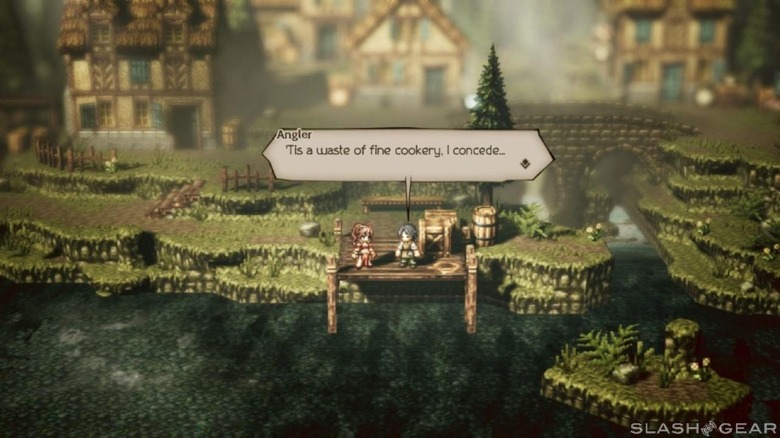
It's a cool system and I'm happy to have a reason to cycle through all eight characters throughout the course of the playthrough, but I just wish the payoff for doing so was better. Working your way through all eight stories takes a long time, and while the writing is decent, I don't think it's particularly great. There's a lot of it too, so expect to have some serious downtime if you intend to see all this game has to offer in a single playthrough.
With that in mind, if you're looking for a game you can really sink your teeth into, this is it. There's dozens and dozens of hours of content in the main portion of the game alone, and total playtime is extended further by the number of extra areas to explore and plenty of side quests to complete.
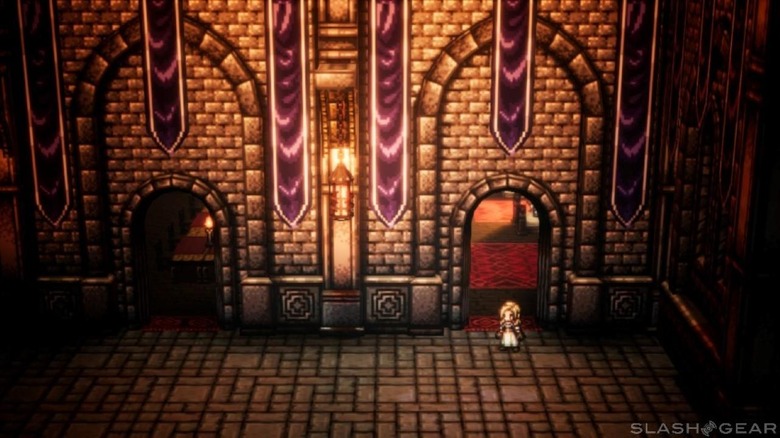
One thing I particularly like about Octopath Traveler is that there aren't really any waypoints – you're simply told which city to go to in order to begin the next chapter in a certain character's story, but beyond that, you're on your own. When an NPC gives you a side quest, you're left mostly unassisted in figuring it out, and there's something novel about that here in 2018. This approach, I feel, makes you appreciate the game world as whole, since you're not simply running from waypoint to waypoint and forgetting to explore.
Wrap-Up
In the end, I have to say that Octopath Traveler is a largely solid game that makes some missteps when it comes to its narrative. Don't get me wrong, the individual stories are mostly good and enjoyable, but there isn't as much cohesion as I'd like. The basic structure of each chapter stays the same pretty much throughout the entire game as well, and that can get a little grating after a while.
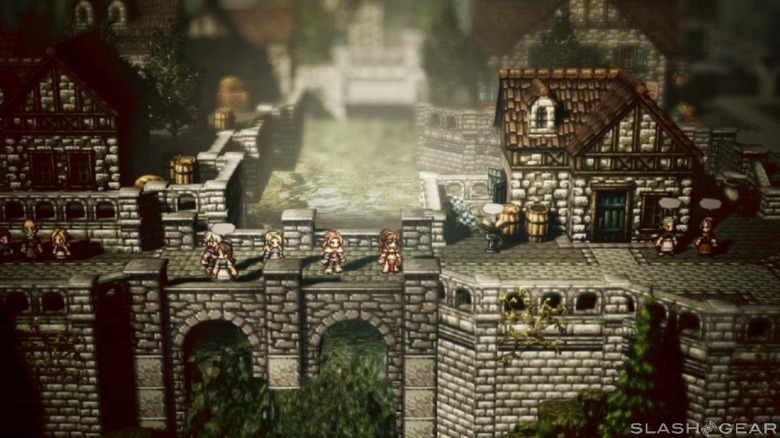
Still, for me the game's strengths outshine its weaker points, and even if they didn't, Square Enix and Acquire should be commended for trying something new instead of sticking to established tropes. In fact, I'd argue that it's better to attempt something new and miss the target here and there than it is to stick to what's familiar and do it really well.
I don't have any problem recommending Octopath Traveler to anyone who is fond of the great 16-bit RPGs of the past, just be prepared for something that's a little different from what you're used to. Personally, I'm excited to see where Square Enix and Acquire go from here – I'd love to see them take another shot at the unique structure of Octopath Traveler in a follow-up game someday, but for now, I'm more pleased than not with this initial effort.
